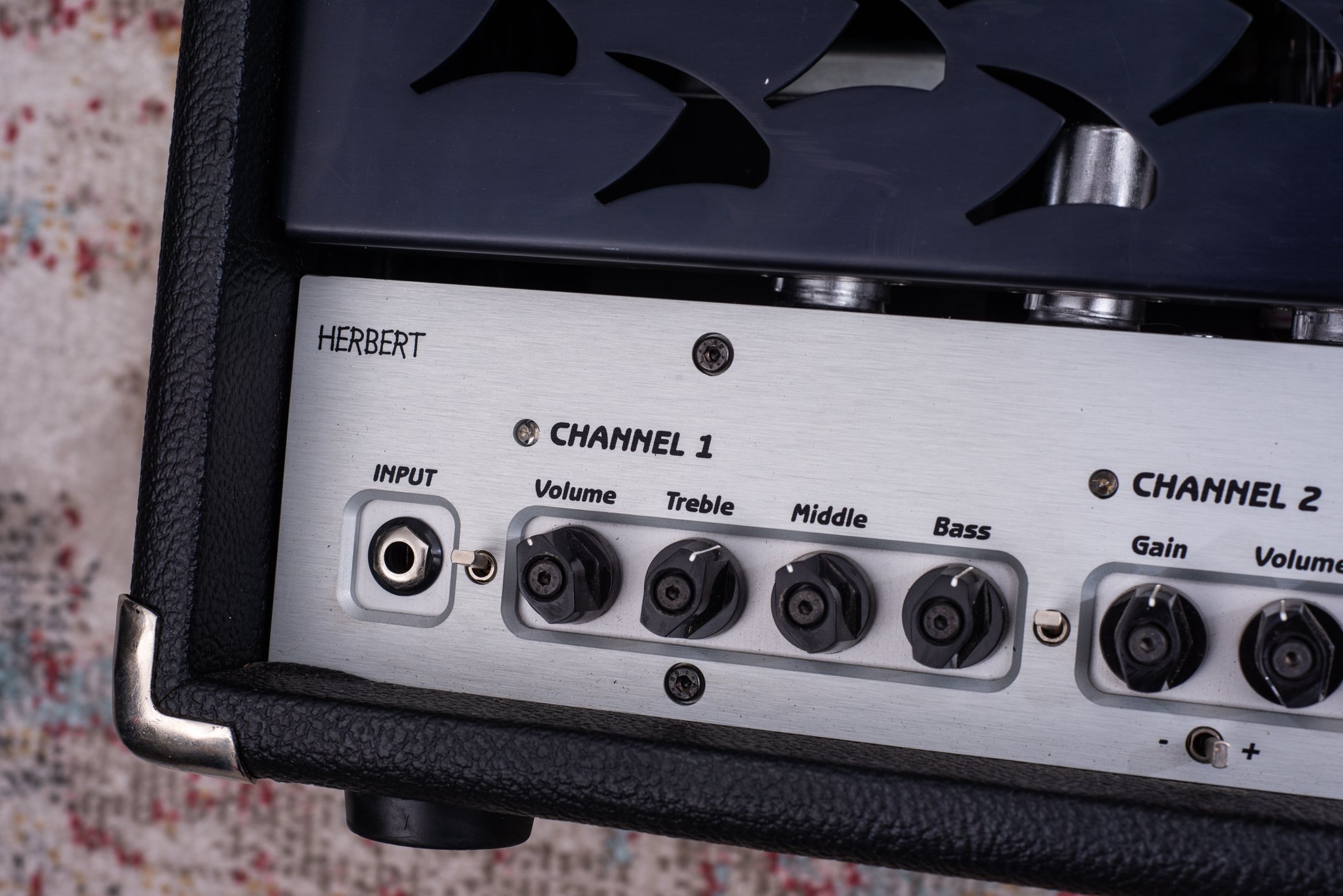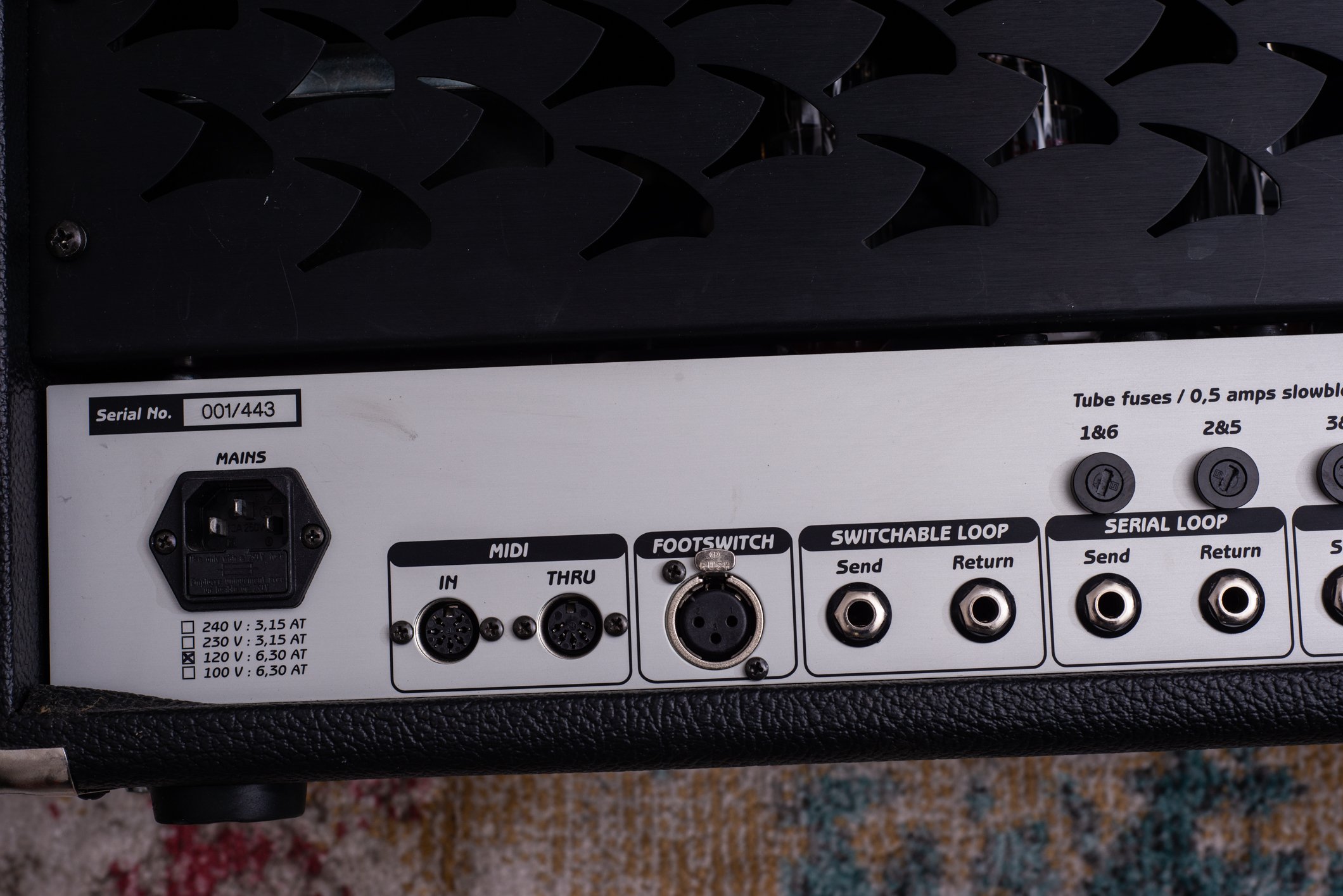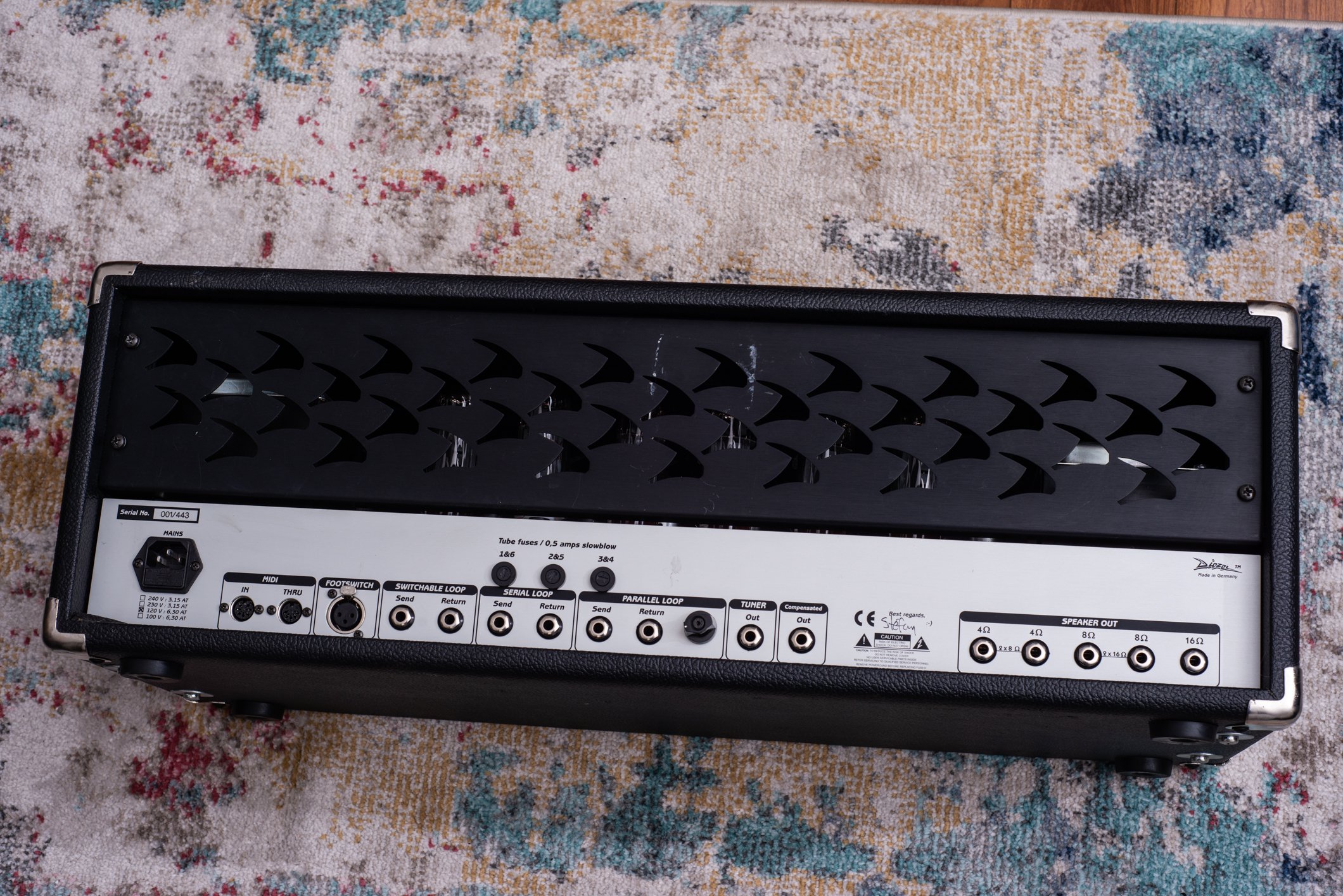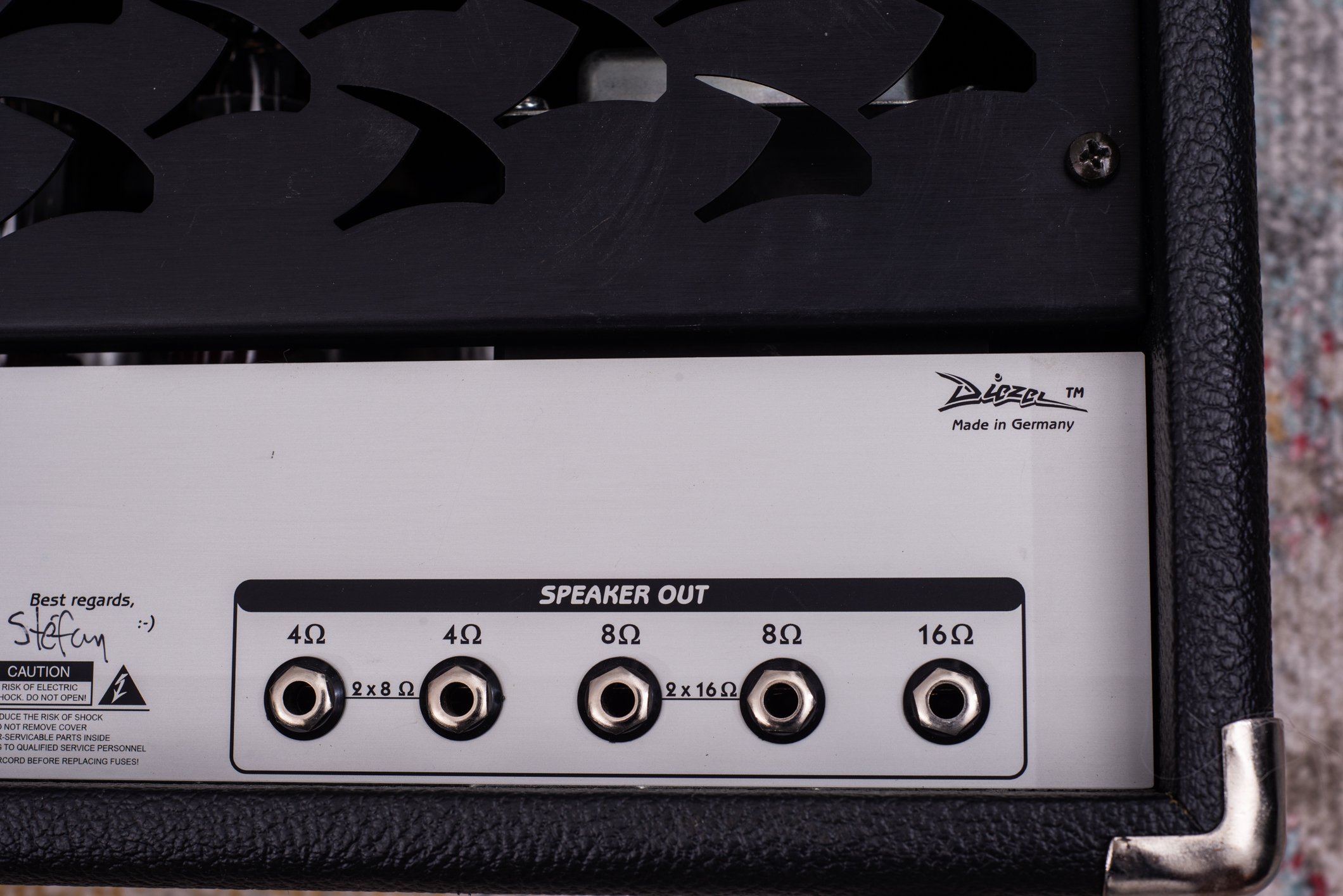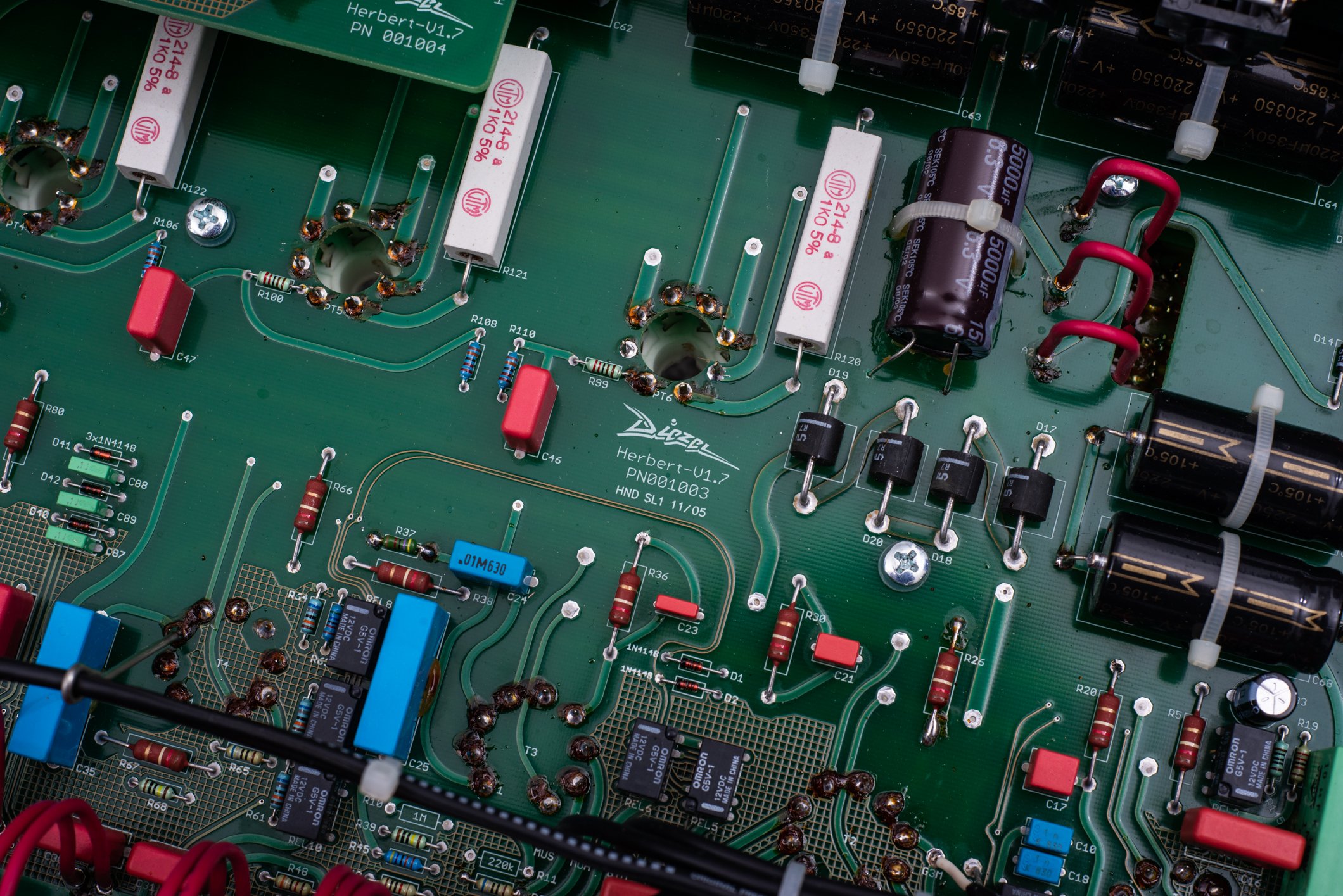2007 Diezel Herbert Mk I
Specs
3 Channels
Channel 2 has + and - modes
Footswitchable mid cut
180w Output
6x EL34 Power Tubes
6x 12AX7 Preamp tubes
$4499 in 2007
Overview
I’ve heard great clips of various Diezel amps online, but never had one until I grabbed the Einstein 50 locally. Within the span of a week of playing that amp, I was hooked, and immediately on the hunt for another. This amp popped up online for a fair price, so I went for it - and I’m so glad I did. This is easily one of the top amps in my entire collection for high gain tones, and I’m seriously impressed and how awesome it sounds, even at reasonable volumes - not something I’d expect from an amp with 6 power tubes and a 180w output rating.
Part of the reason it’s so good at lower volumes is that power amp distortion isn’t a big part of this sound character, but it also has individual channel volumes as well as a master volume section - completely with two masters to switch between. This gives a lot of control over the volume level, and once you have the channels balanced together, you can easily control the overall amp this way. The master section also contains presence, depth, and a mid cut control.
The mid cut really deserves its own section. This is absolutely a highlight of the amp - it’s not an overly heavy handed mid scoop as I originally expected, it’s actually very well balanced and simply changes the voicing in a way you also have some control over. There are two controls - intensity, and level. The intensity controls the depth of the mid cut, so you can adjust if you want more or less of the effect - I actually find it set exactly halfway to be perfect. Then the level control lets you control the volume of the mid cut, so you can set it to be exactly the same volume to your ear as when it is turned off, or you can make it louder (ex. if you like a more aggressive cut for a solo) or quieter (ex. if you play rhythm with the cut on, and want both a volume and mids boost for a solo when turning it off). This mid cut feature can also be used on any channel, making it extremely versatile, especially when combined with the dual master volumes.
As for the rest, it’s a 3 channel amp, with a clean channel, drive channel and… even more drive channel. Each has its own 3-band EQ and volume controls, and both drive channels have a gain control (but clean doesn’t). There aren’t many switches or voices to tweak except for Channel 2, which as a “+” and “-” mode. In minus mode, it’s much more capable of doing mid-gain crunch tones, but this is no Marshall, so discerning classic rock players likely won’t be satisfied. However, it’s a great crunch in its own right, just not a clone of some other sound, and it’s not trying to be either. Kick in the plus mode, and it’s back to being a high gain monster, with nearly as much gain as Channel 3 and a similar voicing. There’s more gain on tap than you could possibly use in either drive channel, so this opens up some great possibilities for setting the amp to your preference. If you prefer Ch2 for leads, set the gain and EQ to taste, and you can still have a chugging metal rhythm tone on Ch3, or vice versa - and don’t forget the mid cut on top of that.
The newest version of this amp, the Mk 3, has less gain and a slightly less aggressive voicing in the comparison clips I’ve heard, but I’m sure it still has plenty of gain on tap - I rarely use the gain set above 11 O’clock on Ch3 on this Mk 1. The feature I’m the most interested in for the Mk 3 is you can now footswitch between the plus and minus modes on channel 2, so while you still have shared gain/eq/volume on that channel, it makes it into a pseudo 4-channel amp. It’s not a feature I necessarily need, but it’s a cool plus - for now, I just walk over and flip the switch when I want to play a song that requires clean>crunch>high gain.
Overall, I’d highly recommend this amp if you’re into high gain tones, I’d consider it one of the best amp designs ever made.

